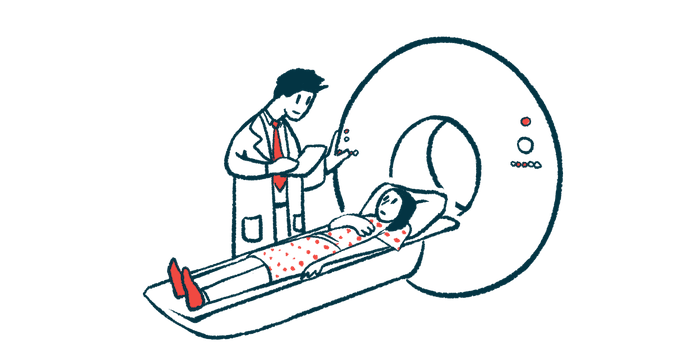New imaging technique may better monitor muscle disease than MRI
Noninvasive technology uses light, sound waves to visualize muscle tissue
Written by |

A new noninvasive imaging technique was found to be better than standard approaches like MRI or ultrasound for visualizing diseased muscles in people with late-onset Pompe disease (LOPD), according to a recent study.
The technique, called multispectral optoacoustic tomography (MSOT), uses light and sound waves to visualize the deeper layers of muscle tissue.
“The findings of this work suggest the implementation of MSOT imaging into the comprehensive and complex care of these rare disease patients and could possibly reduce other more invasive procedures in the future,” researchers wrote.
The study, “Non-invasive optoacoustic imaging of glycogen-storage and muscle degeneration in late-onset Pompe disease,” was published in Nature Communications.
Pompe symptoms include progressive muscle weakness, poor muscle tone
In Pompe disease, a large sugar molecule called glycogen can’t be broken down and abnormally accumulates in cells. This causes organ damage, especially to the muscles needed for moving, breathing, and heart function, leading to symptoms such as progressive muscle weakness and poor muscle tone.
While people with infantile-onset Pompe have severe symptoms that emerge early in life, LOPD is characterized by slower declines in muscle and breathing function.
Patients need to be monitored over time to see how their muscle weakness is progressing and if treatment is working. Currently available techniques for monitoring patients each have their own limitations.
For example, lab biomarkers taken from blood samples are not widely available or standardized across different centers, according to the researchers. Functional tests require a patient’s active cooperation and patients can learn how to perform better over time.
While imaging can offer a good alternative for looking at the muscles, techniques such as MRI are expensive and time-consuming. The need for certain positioning or sedation can be risky for patients with breathing issues.
“There is an unmet need for non-invasive techniques to better and more objectively assess disease involvement directly in the muscles of PD [Pompe disease] patients with the lowest burden possible,” the researchers wrote.
MSOT is a noninvasive imaging approach that uses a so-called “light in and sound out” approach to precisely image and quantify muscle components, even in deep parts of tissue. Essentially, it involves pulsing laser light at the body, and the output is detected with an ultrasound, which uses sound waves.
MSOT effective for visualizing muscle in other neuromuscular conditions
The strategy has been proven effective for visualizing muscle structure and the extent of muscle disease in patients with other neuromuscular conditions, such as Duchenne muscular dystrophy.
To learn more about the potential of MSOT for monitoring Pompe disease, scientists launched a clinical trial (NCT05083806) in Germany in which the technique was used to evaluate the bicep muscles of the upper arm in 10 adults with LOPD and 10 healthy adults without signs of muscle disease, who served as a control group.
Among the LOPD patients, who were a mean age of 40.6 years, eight were on enzyme replacement therapy with Myozyme (alglucosidase alfa; sold as Lumizyme in the U.S.).
Before testing MSOT in these patients, the scientists performed proof-of-concept experiments that showed MSOT was feasible for detecting tissue remodeling caused by glycogen accumulation and that certain MSOT findings correlated with glycogen concentrations.
The scientists next compared the utility of standard imaging approaches, namely MRI and ultrasound, to MSOT for distinguishing muscle problems in Pompe.
Results showed MSOT imaging scans were generally better than standard imaging for distinguishing Pompe patients from healthy controls.
MSOT scans can show features not easily visualized with ultrasound, MRI
Evidence from the MSOT scans suggest a degeneration of muscle that was replaced by scar tissue and fat accumulation in Pompe disease, whereas these features hadn’t been easily visualized with ultrasound or MRI.
To further validate the findings, the researchers performed an identical MSOT approach in a few patients from a different clinical center, with similar observations.
Notably, MSOT scanning was less time-consuming than standard MRI. The bicep scan overall takes somewhere around 13 minutes.
“MSOT holds great potential to become a sensitive imaging technology for diagnosing … and monitoring patients with LOPD,” the researchers wrote.
Still, the scientists noted certain limitations of the study, including its relatively small sample size and the fact that because of the way it works, MSOT may be most suitable for patients with lighter skin, so more work is still needed to optimize and validate the approach.
The researchers indicated their next step could be a follow-up study that would include pediatric patients and individuals with infantile-onset and late-onset Pompe.




